|
-
18th July 12, 12:10 PM
#21
Thank you, Richard, That is a crystal clear explanation of the shoulder arrangement, and the pictures are very helpful as well.
-
-
18th July 12, 12:33 PM
#22
 Originally Posted by M. A. C. Newsome

Based on the photo and description OC Richard has provided, I should have enough information to create one. And I have been wondering what best to do with this 4 yard length of 29" wide New House Highland tartan I have lying around..... :-)
Matt,
If you do decide to create a belted plaid, perhaps a step-by-step analysis of its progress, complete with photos, would be most beneficial to the rabble? I had to ask!  
Cheers,
-
-
18th July 12, 04:59 PM
#23
Here are the photos I promised of the evening plaid from my shop.
This first photo is of the plaid laid out on the floor showing its full length. That is a yardstick laying next to it.
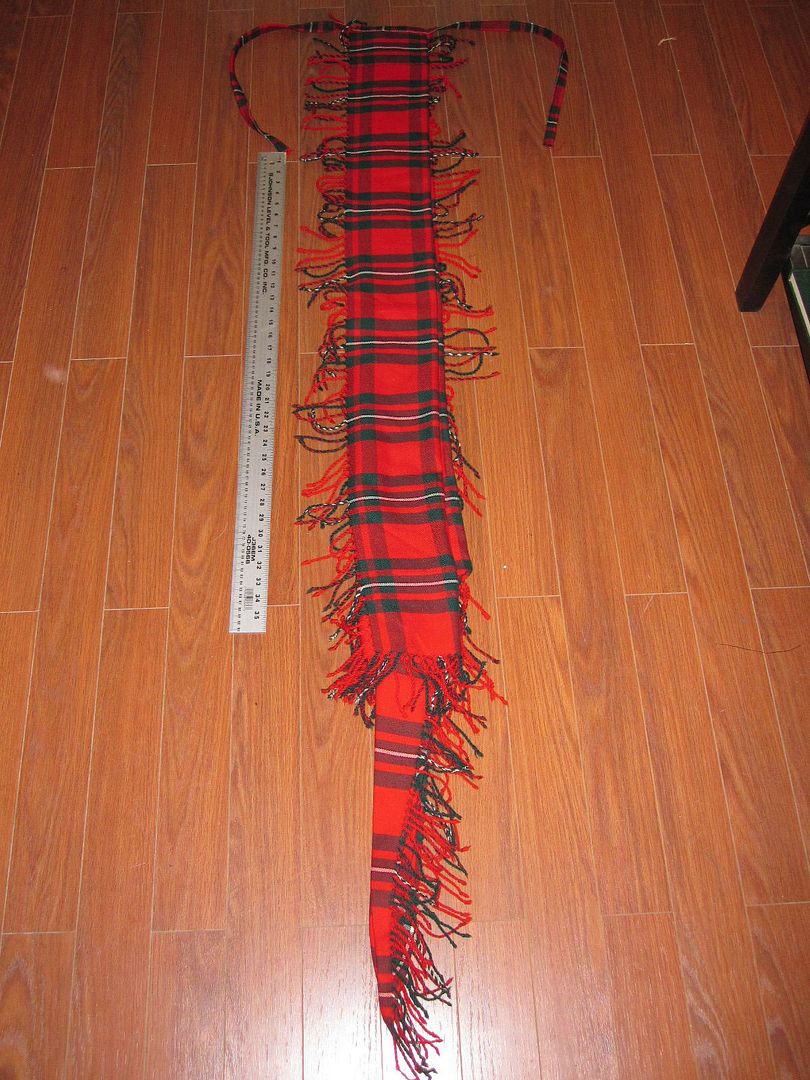
Next is the Plaid opened up a bit to show the pleating.
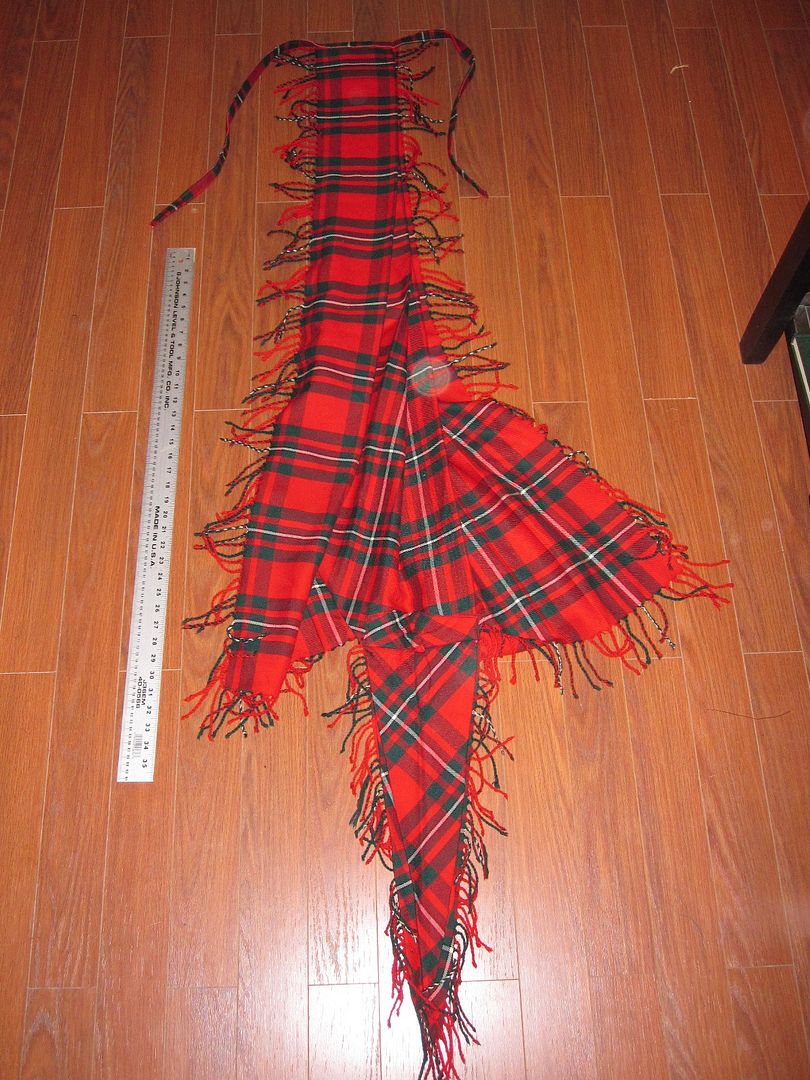
Here is the part that goes around the waist. This Plaid is tied with the tabs.
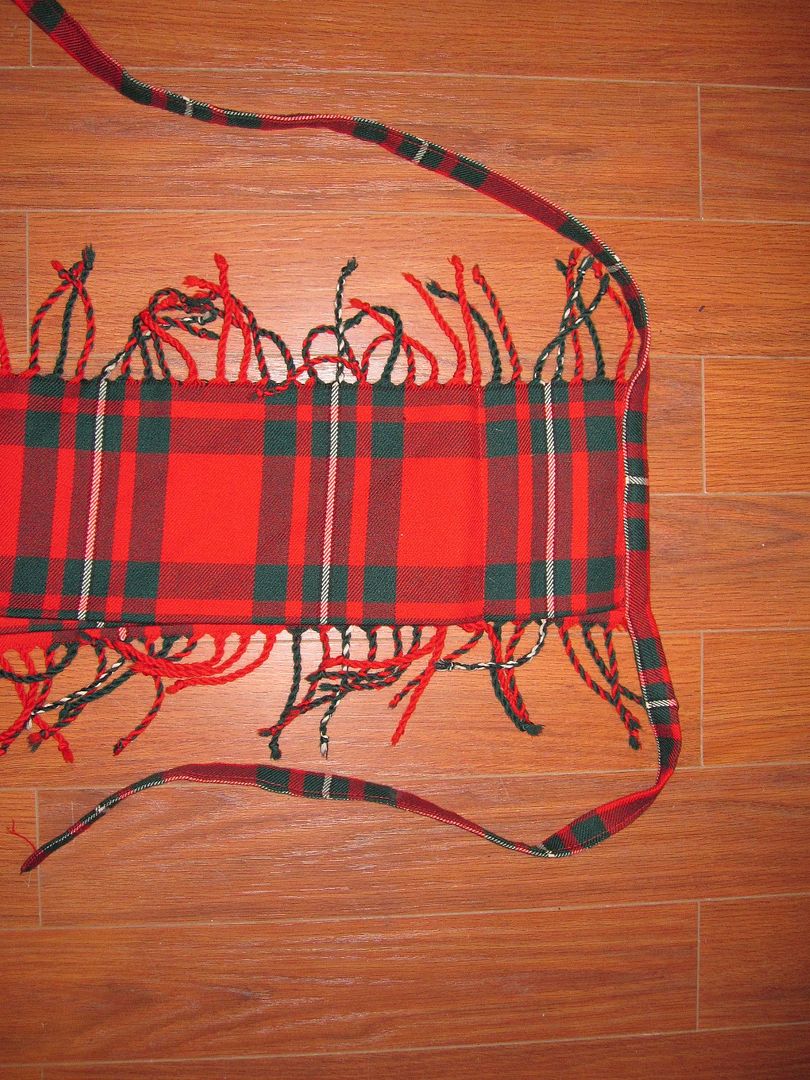
Then a detail shot of the part that goes over the shoulder.
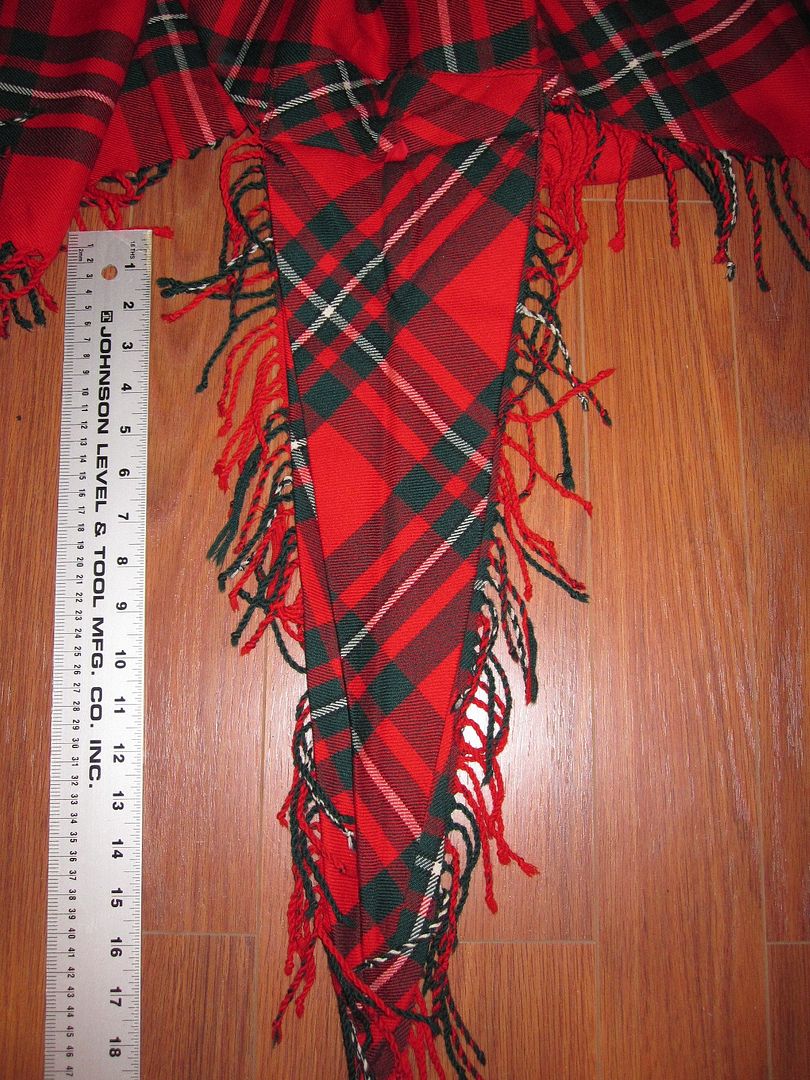
And here is a close-up of the small tab used to fasten the Plaid to the epaulette button. The button loop is that small fold of red satin ribbon.
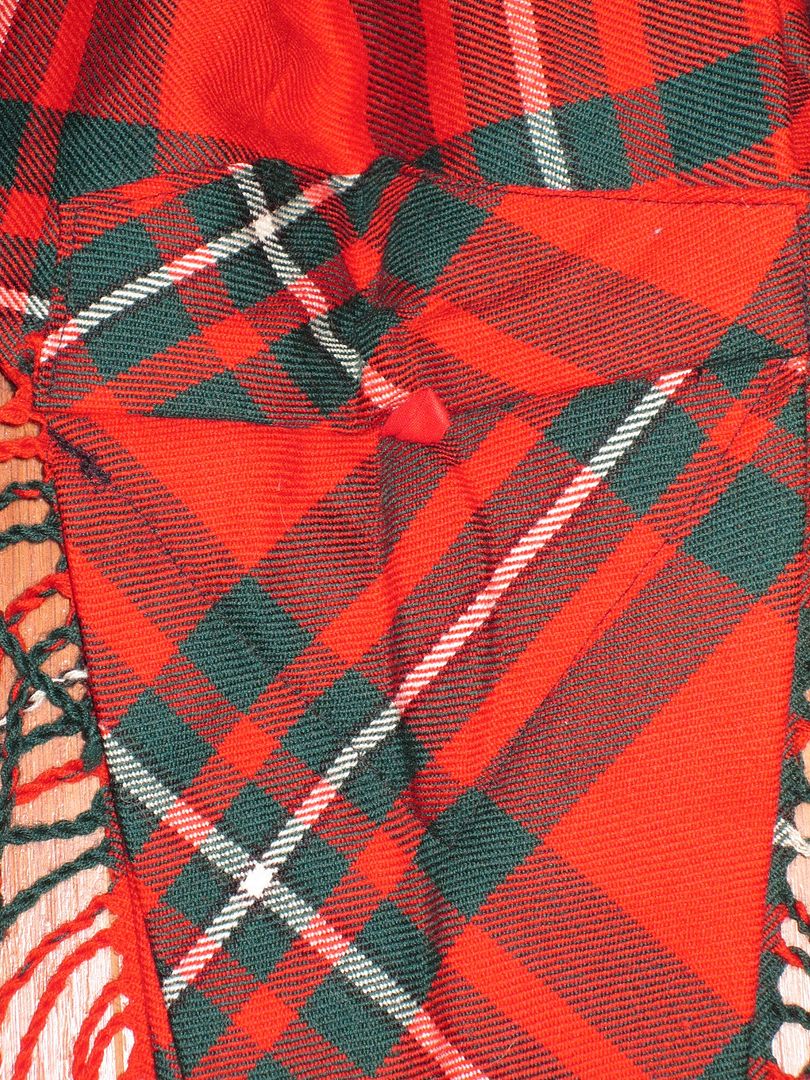
I hope this is what you were looking for.
-
-
18th July 12, 05:16 PM
#24
Thanks so much for those photos! Far better that the funky one I posted. They make the structure of the thing so very clear.
It's not hard to make, but very time-consuming! Drawing out the fringe that long, then rolling each section, and tying a tiny knot at the end of each one, takes forever.
Steve, might I have permission to use one or more of those photos in future when this subject comes up? It seems to come up regularly, and it's a bit difficult to get people to understand how these plaids are made, and how unlike the modern "fly" plaid they are.
Proud Mountaineer from the Highlands of West Virginia; son of the Revolution and Civil War; first Europeans on the Guyandotte
-
-
18th July 12, 05:20 PM
#25
-
-
18th July 12, 05:35 PM
#26
Very helpful, Steve. Thank you for taking the time to do this. The photos bring up a few more questions...
The tabs tie to a belt? They don't look long enough to go around the waist.
About how wide is the main body?
The long triangle appears to be pieced together and a double thickness, correct?
I understand the satin loop attaching to the epaulette button. Is the small tab sewn down all around its edge to the main body? Or just on the edge closest to the long triangle?
What part goes under the epaulette and what goes over it?
I apologize for my slowness to get a handle on this.
-
-
19th July 12, 12:48 AM
#27
David,
I am going to plead to an amount of ignorance on the topic of how to wear this thing.
It came into my shop as a consingment along with a kilt that had not been worn in almost 30 years.
I have tried to put it on. The ties do indeed go around my waist and tie. The epaulette tab however does not fit any jacket I have in the shop or have ever seen.
This thing is huge and heavy. The body is made from six pleated layers. I would estimate 2 1/2 fabric yards. The trianglular shaped part that goes over the shoulder is almost 1/2 inch thick. I would estimate at least four or all six layers with the triangle sewn over them are present.
Even counterbalanced with a very large plaid brooch it still pulls my jacket out of shape from its weight alone.
I have worn a mock belted plaid on the occasion of a parade where I needed to show off as much Tartan as possible.
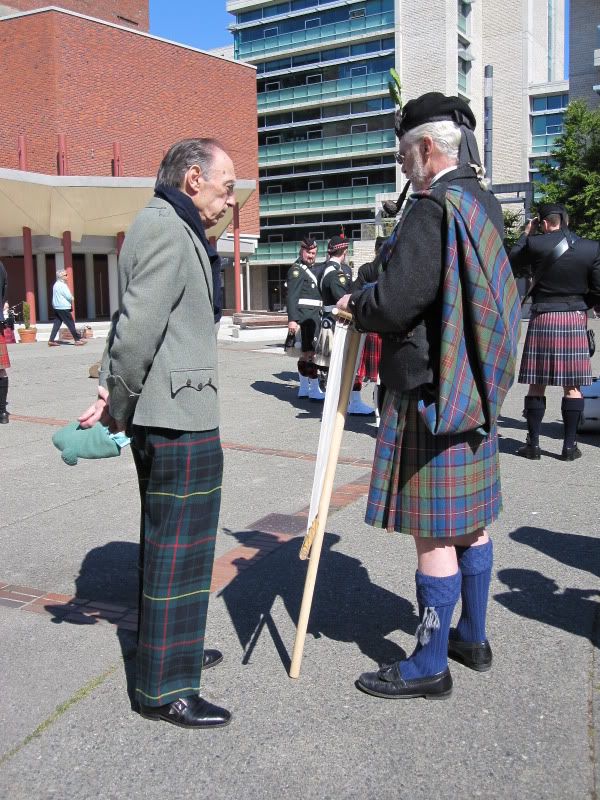
This used only 1 1/2 fabric yards of 10oz fabric.
I'm sorry to say that I have no occasion to wear something like this so called "Evening Plaid" so have no experience with them.
-
-
19th July 12, 01:39 AM
#28
Thank you again for your forbearance, patience, and efforts to help me understand this subject -- a tartan windmill if ever one was jousted.
-
-
19th July 12, 03:53 AM
#29
 Originally Posted by Steve Ashton

Here is the part that goes around the waist. This Plaid is tied with the tabs.

Sorry to trouble you again Steve but I have a couple questions. One is, what does the other side of this portion look like? When I made mine I had a vintage one to copy, which I don't have any more, and I can't quite remember how the pleats are arranged, that is, how many pleats there are, how deep they are. I recall that the pleats were sewn for the first 8 or 10 inches or so.
Are the pleats sewn like that in yours? How far are they sewn?
Thanks! Richard
PS this closeup of the fringe is great, as it shows how the fringe isn't done randomly, but carefully selected. To make this ropelike fringe you select and divide the area to be one rope into two sections. For smart-looking fringe each section is usually a single colour, or a 50/50 split of two colours. Then each of the two sections is seperately twisted, then put together and allowed to twist itself into rope. I put a tiny knot at the end of each rope, though I've seen Scottish-made plaids where it seemed like they dipped the end of each "rope" into some sort of glue or summat to keep the ends from fraying.
Last edited by OC Richard; 19th July 12 at 04:00 AM.
Proud Mountaineer from the Highlands of West Virginia; son of the Revolution and Civil War; first Europeans on the Guyandotte
-
-
19th July 12, 08:49 AM
#30
Very interesting indeed. Thanks for sharing your excellent photos and commentary, Steve.
Cheers,
-
 Posting Permissions
Posting Permissions
- You may not post new threads
- You may not post replies
- You may not post attachments
- You may not edit your posts
-
Forum Rules
|
|
Bookmarks